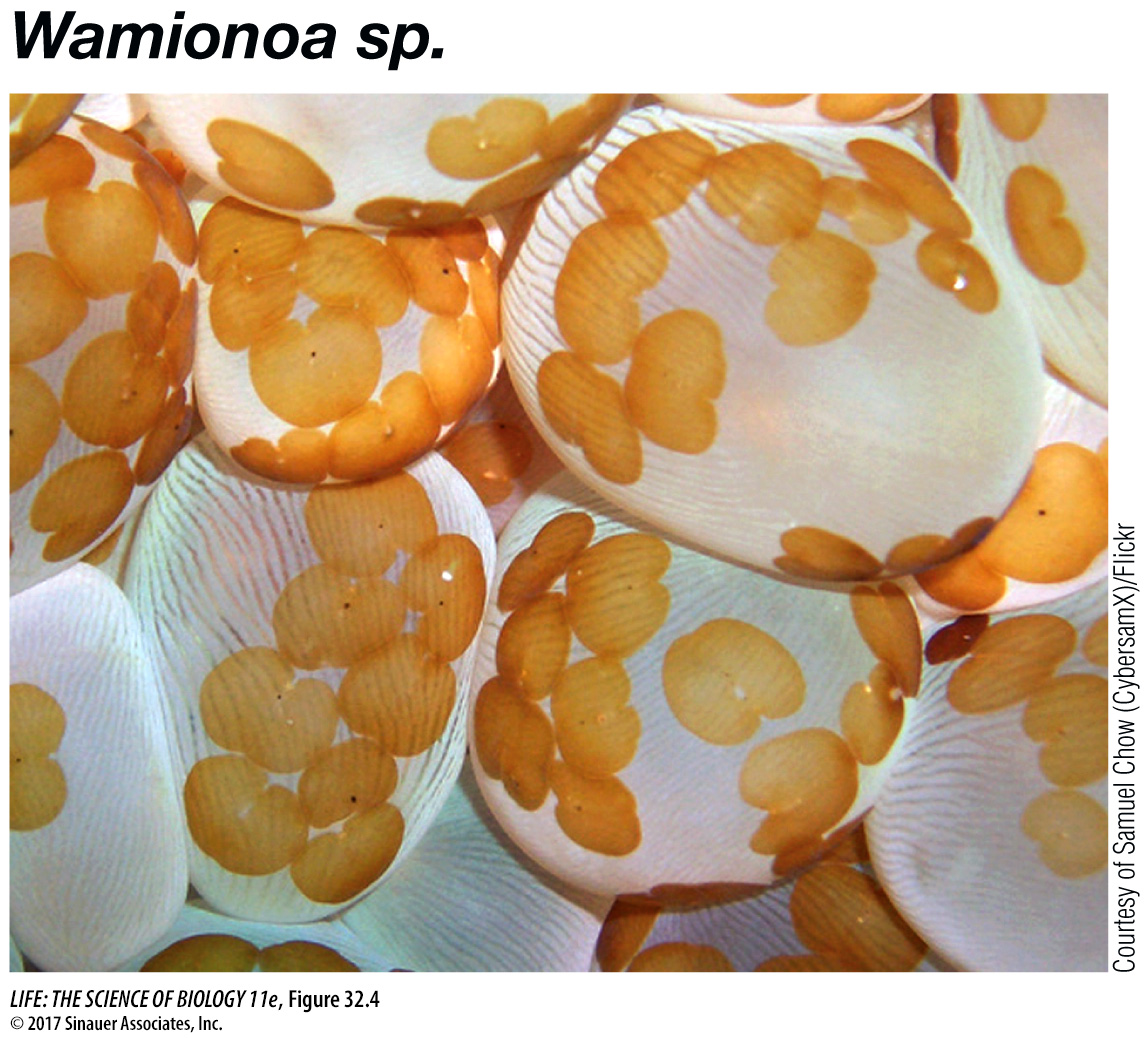Echinoderms and Hemichordates Are Restricted to Marine Environments
About 13,000 species of echinoderms in 23 major groups have been described from their fossil remains. They are probably only a small fraction of the echinoderm species that have ever lived. Only 6 of the 23 major groups known from fossils are represented by species that survive today; many clades were lost during the periodic mass extinctions that have occurred throughout Earth’s history. All of the 7,500 extant species of echinoderms and 120 species of hemichordates live in marine environments.
Echinoderms are bilaterally symmetrical as larvae but pentaradially symmetrical as adults.
Echinoderms use their tube feet in a variety of ways to capture prey.
Hemichordates have a bilaterally symmetrical, wormlike body organized into three major parts: a proboscis, a collar, and a trunk.
The echinoderms and hemichordates (together known as ambulacrarians) have a bilaterally symmetrical, ciliated larva (Figure 32.3A). Adult hemichordates are also bilaterally symmetrical. Echinoderms, however, undergo a radical change in form as they develop into adults (Figure 32.3B), changing from a bilaterally symmetrical larva into an adult with pentaradial symmetry (symmetry in five or multiples of five). As is typical of animals with radial symmetry, echinoderms have no head, and most species move equally well in many directions. Rather than having an anterior–posterior (head–tail) and dorsal–ventral (back–belly) body organization, most echinoderms have an oral side containing the mouth and an opposite aboral side containing the anus.

Figure 32.3 Echinoderms Are Bilaterally Symmetrical as Larvae but Radially Symmetrical as Adults (A) The ciliated larva of a sea star has bilateral symmetry. Hemichordates have a similar larval form. (B) An adult sea star displays the pentaradial symmetry of adult echinoderms. The canals and tube feet of the water vascular system, as well as the calcified internal skeleton, are shown in this diagram. The body’s orientation is oral–aboral rather than anterior–posterior.
Some recent genomic analyses suggest that two groups of small, highly reduced, soft-bodied marine organisms, the xenoturbellids and the acoels, may be the sister group of the ambulacrarians, although other studies suggest that they are the sister group of bilaterians. The five known species of xenoturbellids are wormlike organisms up to 20 centimeters long that feed on or parasitize marine mollusks. They have a very simple body plan, with almost no well-defined organ systems. The mostly tiny (<2 millimeter) acoels are also highly reduced, wormlike organisms that live as plankton, between grains of sediment, or on other organisms such as corals (Figure 32.4). They are among the simplest of bilaterian animals, with no gut, circulatory system, respiratory system, or excretory system. They feed through a mouth and form a vacuole around tiny food items. They are hermaphrodites, and their sperm form between the epidermis and digestive structure. There are about 400 known species of acoels.

Figure 32.4 Highly Reduced Acoels May Be Relatives of the Ambulacrarians Acoels (yellow) are seen here living on bubble coral (white). Acoels (“without coelom”) feed by enveloping food particles in a vacuole within which nutrients are digested. These hermaphroditic animals can reproduce rapidly and may become problematic in saltwater aquariums.

